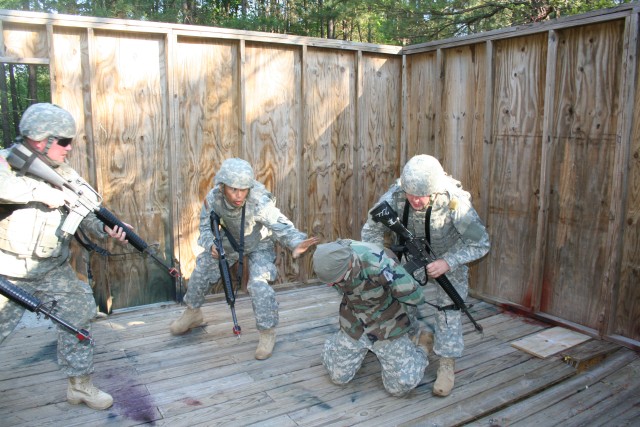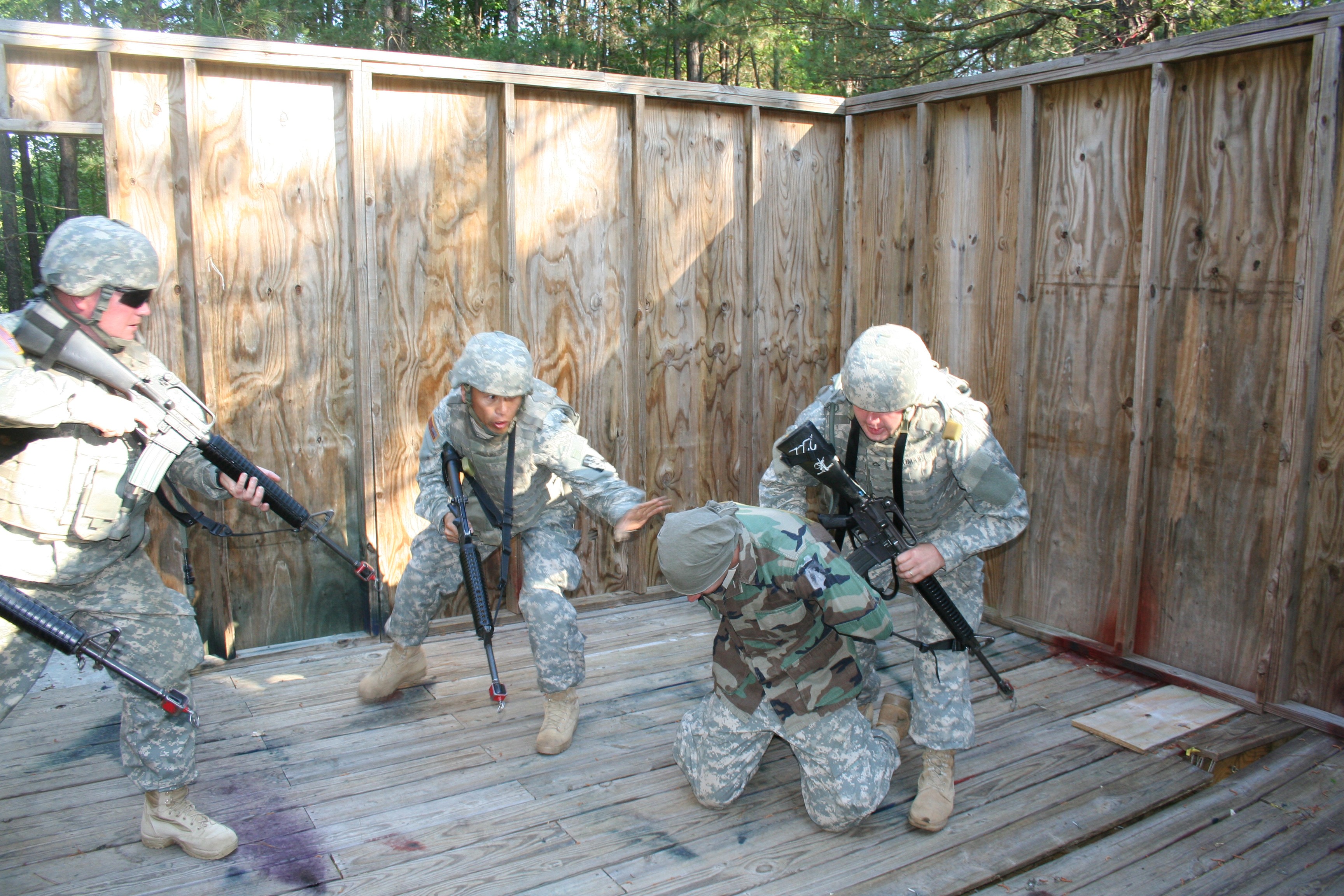FORT GORDON, Ga. -- (April 30, 2009) "Go! Go! Go!"
Three Soldiers move up to the door of a wooden shack. The air around them is dense from the smoke grenades.The sound of rifle fire cracks through the air; but through the haze, there's no telling where it's coming from.Somewhere nearby, two women are screaming for help.
Upon entering this hostile village, the squad broke up into teams, some to quell the surrounding chaos and others, like the three by the door, to complete the mission objective. On the outskirts of the area, another group stands by, watching, observing. They've seen enough."End of action!" one yells.
The Soldiers relax and the enemy combatants put down their weapons. Everybody moves off the staging area for debrief. This is Fort Gordon's Training Area 9, and these Soldiers here have just finished the final evolution of Mercury Fusion.
Mercury Fusion is the capstone of Signal's Advanced Individual Training, a requirement for all Signal Soldiers. For six days, those participating move out to Forward Operating Base Dunham where they live, work, eat and train, just as they would in the field.
The students have to complete 120 hours of classroom and field activities covering control points, managing FOBs, individual training, range practice, live fire exercises and more," said Staff Sgt. James Lewellen, Mercury Fusion instructor.
For at least one participant, Pfc. Thomas Schaffer of 551st Signal Battalion, the exercise provided a form of much-needed "on the job training."
"It's been long and busy, but it gets you ready for the field," he said. "We went through the field exercise twice and the first time, we had no idea what we were doing. You learn it in the classroom, but the chaos and the adrenaline, you're not expecting it. My last few months have been exclusively in a classroom. You can talk for hours about what you should do, how you should clear a building, what to look for on patrol, but until you actually experience it in a hands-on, field environment, then you won't actually know what to expect or how to react."
That's why the instructors, many of whom have served combat tours in Iraq and Afghanistan, believe they have a responsibility to make the instruction as realistic as possible.
"It's important we pass on what we know to the trainees. You don't want a football coach who never played the game. At the same time, I think our experiences in combat, being deployed make us well suited to teach these Soldiers the reality of what they might face," said Staff Sgt. Thomas Phelan, Mercury Fusion instructor.
But why call it Mercury Fusion' Lewellen says the idea came from Col. Mark Horoho, 15th Signal Brigade commander.
"Col. Horoho came up with the name. In Roman mythology, Mercury was the messenger of gods," Lewellen explained. "Signal is the voice of the Army. We also call it Fusion because this is when we bring together all the different Military Occupational Specialties to work together."
Lewellen also said the Fusion describes how the deployed Soldiers will see, experience, and adapt to different cultures when they move on to their next duty assignments.
"Dealing with a different culture is an important part of deployment," he said. "To that end, during the training, we take everything away from them, all the comforts they're used to and make them work together to do the job," he said. "We constantly change the situations and update the training. This way, they're better prepared for the realities of combat than some of us were who didn't have this."


Social Sharing